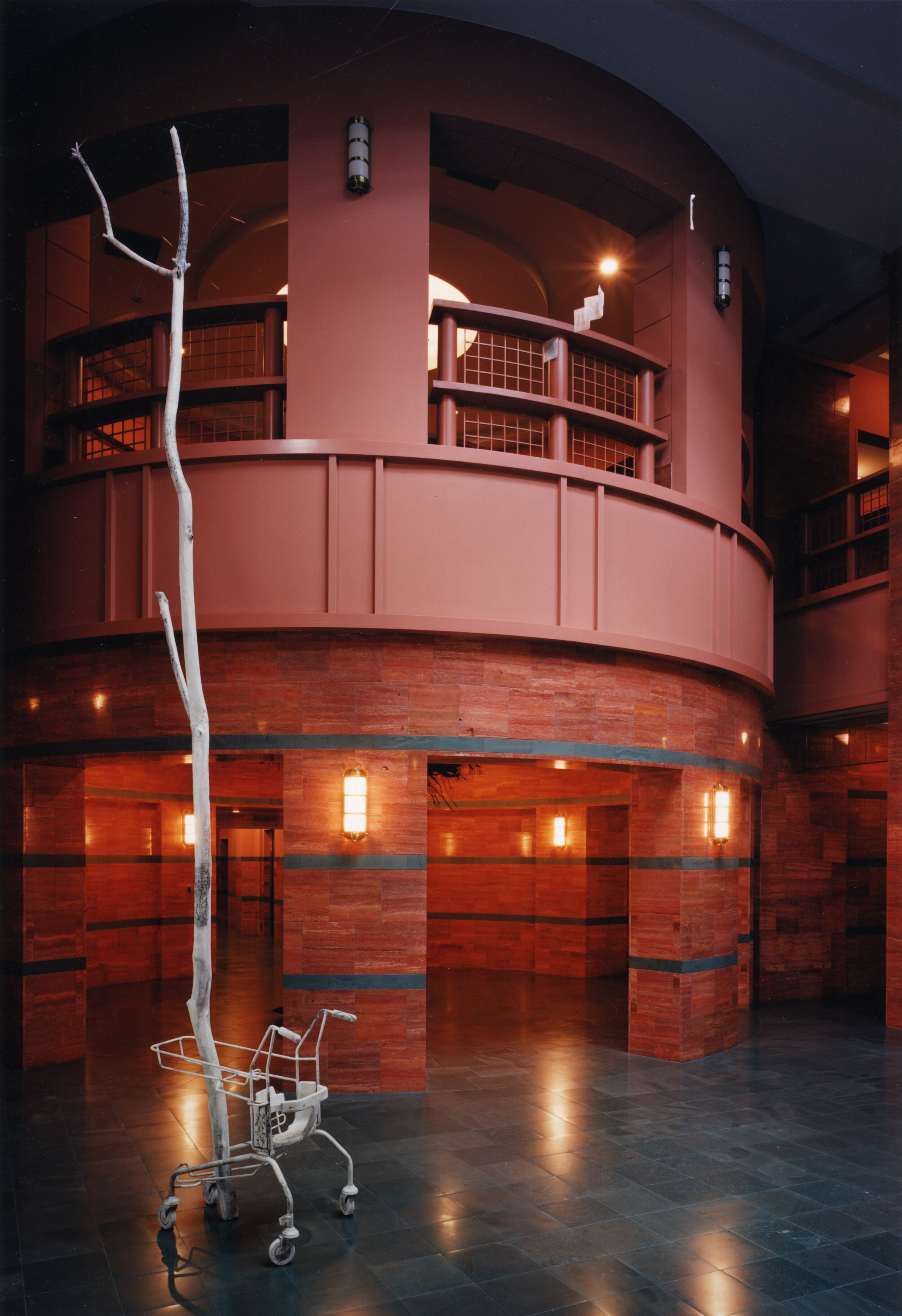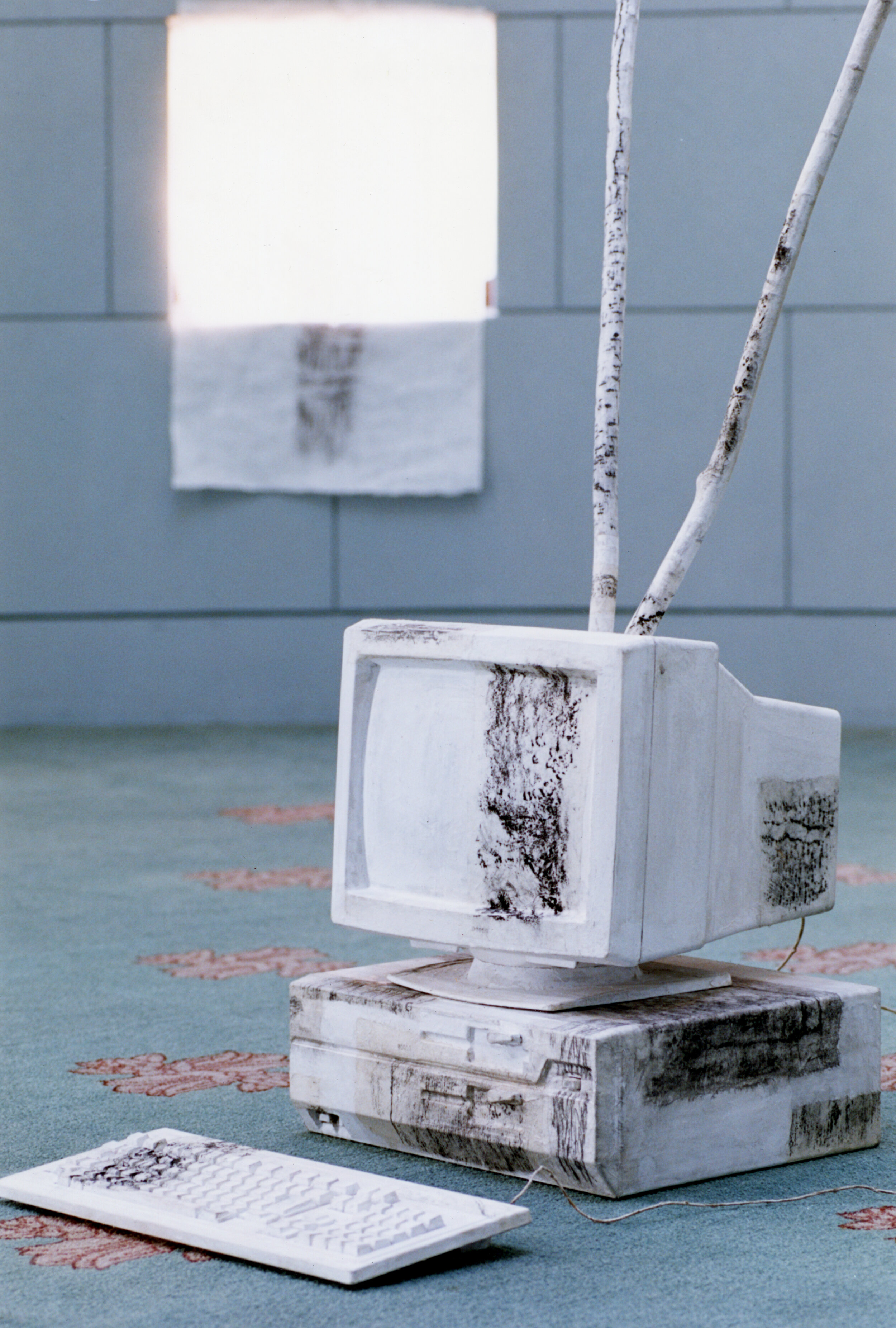
DISTRIBUTION X EARTH
1998
words by Benjamin Morse
A thin wire spans a distance between a rubbing of a tree trunk to a collage, recalling Keiko’s earlier styles, of a collection of rubbings made throughout her travels in Korea and parts of Japan. Hanging on the stainless steel wire above the heads of visitors hang other frottaged surfaces.
Layers of Space 1998 Washi, Charcoal, Shell Powder, Oil on Canvas, Wire
The tree exists in a relatively natural state when compared to the opposite collage, which is a human construction rather than a natural one. Again the work of the hand, now quite human, as seen against the architectural components in the exhibit proves that art exists. The humanity, and even mortality of the artist is further evidenced by the constuction of alternating layers of glue and paper in their traditionally natural forms that exist beneath these marks. Such a record as a history becomes fixed in the minds of the observers as being a uniquely human art.
PD x Earth 1998
Root, Sap Paint, Copper Vessel, Rain Drops, Wire
Trunk 1998
Charcoal on Canvas
I Was Defeated, Yet...
A large stump, a system of tree roots in all its weight and size is placed carefully on its side in an anthropomorphic gesture of defeat. A mighty tree with its root system, which once served as the beings sole connection with the Earth, bows to a baby chair with a small silver spoon resting on the seat. Products so familiar and thought provoking to us, even through mass production, may no longer be associated in our minds with the source, which was much more powerful. The consumer envisions function at the expense of origin.
Nikawa, or animal-glue combined with shell-powder coats the surface of the roots complemented by the washi-wrapped surface of the baby chair. It’s surface, a charcoal tree-rubbing, is a return to the energy of the forest.
I Was Defeated, Yet... 1998 Root, Chair, Baby Spoon, Washi, Charcoal, Shell Powder
Shopping Tree
The Kasumi Tsukuba Center in Japan, designed by Michael Graves, is a building made by a distribution center engaged in such commercial concerns as shopping centers, family restaurants, and other business ventures. As we move about the center itself, able to make our way through its beautiful spaces, a shopping cart seems to grow a tree. This remarkable union of materials is a humorous observation of the redudant commercialism of mass production, as in a shelf lined by a never-ending supply of products for our personal use. Miyamori points to the origin of these excesses, the forest, through the introduction of this branch, whose shining silver tip can be seen by the visitors that move about the second floor staircase. The surface of the branch is once again wrapped in washi paper covered with a charcoal rubbing of another tree’s surface upon a surface.
Shopping Tree 1998 Branch, Silver, Shopping Cart, Washi, Charcoal
Working Forest from exhibition Distribution x Earth 1998
Studies for Working Forest 1998 Watercolor, Color Pencil on Paper 13 x 20 in.
Computer Detail from Working Forest








